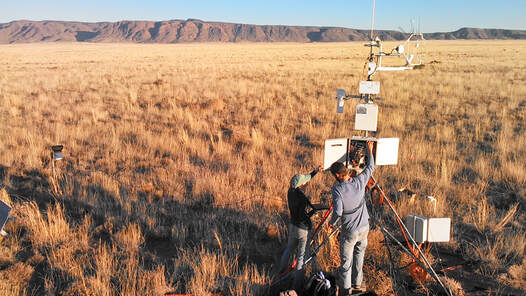Marcy E. Litvak
Professor, Biology Department
University of New Mexico
Ecosystem processes in dryland biomes across the Southwestern US
and home of the....
New Mexico Elevation Gradient (NMEG)
Quantifying carbon, energy and water balance in both natural and managed ecosystems and understanding the processes regulating them is crucial to provide tools for policy makers and to facilitate public understanding of climate change science. Semi‐arid biomes occupy approximately 40% of the global terrestrial surface and contain almost twice the carbon stored in temperate forest ecosystems. Despite the large area and carbon stores in these ecosystems, a lack of research has led to large uncertainties in estimates for semiarid regions such as the Southwestern US. To reduce these uncertainties, my research focuses on understanding the primary mechanisms regulating carbon, energy and water fluxes across ecosystems or landscape units across the Southwest and how these fluxes vary in response to changes in climate, vegetation, soil characteristics, and disturbance regime.
